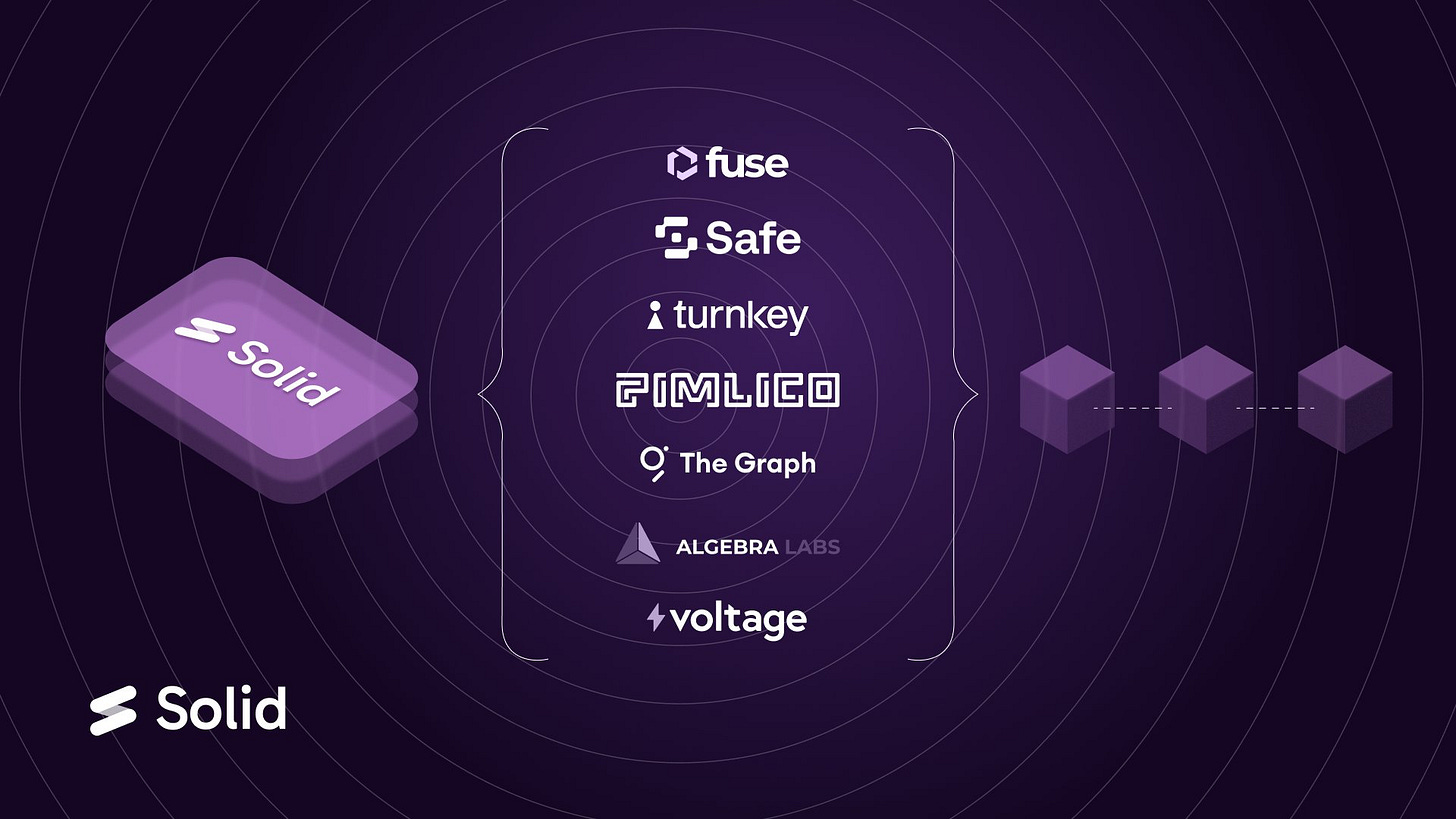Built to Protect: Inside Solid’s Security Architecture
A proactive, layered approach to DeFi security
In DeFi, security has too often meant “just audits.” At Solid, we believe true protection goes far beyond code reviews. In a high-stakes, fast-moving environment like DeFi, protocols must be built not just to pass a checklist, but to adapt, defend, and recover in real time.
That’s why Solid is designed from the ground up with multi-layered defenses, constant monitoring, and an emphasis on prevention.
Let’s take a closer look at how it works.
Real-Time Defense with Check Point
Solid will be one of the first DeFi apps to integrate with Check Point, a global cybersecurity leader trusted by most Fortune 500 companies and listed on NASDAQ. Check Point is known for protecting enterprises at scale, and now we are bringing those prevention capabilities into DeFi for the first time.
Think of Check Point as a DeFi-native firewall: it will continuously monitor activity across the chain and, in the future, will detect and stop suspicious behavior before damage can occur.
Unlike traditional tools, its scope will extend across transactions, vaults, bridges, and third-party contracts. The goal: to catch contagious events before they spread, preventing a single exploit from infecting an entire system.
With Check Point, Solid is adding an active, intelligent, prevention-first layer of protection on top of audits.
More Than Just Audits
Of course, Solid’s smart contracts are audited, but in today’s complex DeFi landscape, audits alone aren’t enough.
Security must be ongoing, operational, and adaptive. That’s why our approach includes:
Bug bounty programs to incentivize continuous, external scrutiny
Real-time vault monitoring to detect anomalies and track performance
Third-party risk oversight, especially for integrated strategies via BoringVaults and other protocols
Solid Vaults are built on the ERC-4626 standard, giving users transparent ownership and making vaults easier to audit, upgrade, and recover.
We also prepare for the unpredictable, from malicious contract upgrades to systemic contagion, by continuously hardening our systems through industry-wide updates and resilient design choices.
To learn more about the technology stack supporting Solid, take a closer look.
Lessons from the Past: Surviving the Terra Collapse untouched
Solid isn’t our first DeFi product. Before this, the Fuse team launched FuseDollar, a diversified stablecoin backed by a basket of assets.
When Terra collapsed in 2022, it triggered a wave of liquidations. Many protocols exposed to UST were wiped out, but FuseDollar maintained its peg. Why? Because it rebalanced automatically, shifting away from failing assets and preserving stability through diversification.
That same approach later protected it during the BUSD deprecation.
These experiences shaped how we think about risk. It’s not only about isolated failures — it’s about defending against cascading events across the ecosystem. Solid carries forward those lessons: monitoring not just our own vaults, but the broader DeFi landscape, and diversifying yield sources by design.
Protecting Against 3rd-Party Risk
Most yield platforms integrate with external protocols, exposing users indirectly to partner risks.
At Solid, every external strategy will undergo continuous oversight. Vaults won’t just be audited once; they’ll be actively monitored, with smart alerts for abnormal behavior, underperformance, or exposure to higher-risk pools. We treat third-party integrations with the same scrutiny as internal systems.
A Philosophy of Resilience
Security in DeFi shouldn’t be about reacting to disasters. It should be about preventing them. Solid’s architecture is designed to:
Detect threats before they hit users
Reduce exposure through diversification
Isolate risk to prevent contagion
Respond and recover quickly if needed
We believe security is not a feature — it’s a foundation.
Solid is built to do more than earn yield. It’s built to protect it.
Explore Solid today and experience the difference a security-first approach makes.



